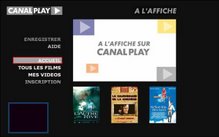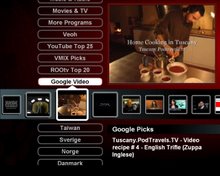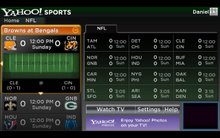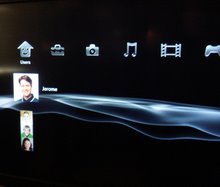Active-TV Ecosystem Developers,
The Issue: How many TV-web channels are available for TV viewing? What standard do they use?
Background: The freedom associated with a PC’s access to PC-web via the internet, has changed our lives. This same freedom will enable TV-web channel developers to bring TV-web to the living room TV
Behind the scene: Anyone can build a TV-web channel, and many major companies already have. With active-TV technology, the growth in TV-web channel development is accelerated, given that it brings to TV-web the same freedoms associated with PC-web access.
I don’t know how many PC-web sites exist, or how many new ones are added to the web every day. Similarly, I don’t know how many TV-web channels [i.e. websites formatted for access at the TV] exist. But like the early days of PC-web, while the number may be relatively low, it is growing rapidly.
I have attached below a list of known TV-web channels or sites. However, such a list quickly falls out of date. I did not include sites from the USA which would have included some interesting examples, such as access to YouTube, Google Video, Veoh, Vmix and more. Also not included are sites from Japan, Korea or Taiwan, whose listings’ would have required additional font support.
As previously described, there are many ways to build or lay out TV-web. When Microsoft introduced the Media Center Edition (MCE) PC, it offered a suggested set of guidelines to show how TV-web, intended for MCE presentation, should look. Although there may be practical reasons for following these guidelines, a TV-web developer can nevertheless build anything they see fit, using any web publishing tools available.
The MCE PC has a means of adding “more programs” to the TV-web channel listings. The name “more-programs” may not be ideal; it is likely left over from the time when TV-web was also known as media applications. Any TV-web channel can be added under the “more programs” channel listings. However, Microsoft selected certain TV-web sites to reside at the top of the TV menu and called them “spotlights”. TV-web channels added to the TV menu via use of “more programs” appear lower down on the TV menu. With the introduction of Vista, Microsoft has instead been calling TV-web channels “on-line media,” rather than MCE “more programs” or “spotlights”.
Like PC-web, once a TV-web channel is offered on the internet, anyone with a capable browser can access it. Using active-TV technology enables any Windows PC to access the site on behalf of a networked TV or Set-Top Box -- there is no need for an MCE PC. A number of TV-web channel suppliers are trying to restrict access to their site to certain geographical locations – such as, for example, the BBC limiting access to the UK. This is generally accomplished via IP address filtering: If the viewer’s IP address is not determined to be located in the correct geographical region, the request for access to the TV-web channel is not granted by the server.
Because Adobe Flash Video (FLV) is very popular with PC-web sites supporting video sharing, it is increasingly used with TV-web channels. Use of FLV was not covered in the MCE TV-web development guidelines. Current active-TV technology supports the distribution of TV-web channels using FLV to devices such as networked TVs and networked STBs located around the home. However, other devices with similar technology, including Media Center Extenders, do not support the use of FLV video. Where these Extenders are similar to active-TV technology is in their support for Windows Media Video (WMV) and MPEG2 video.
Feedback, corrections and comments welcome.
Daniel Mann
link to list of non-US TV-web channels
Navigate YouTube available at iTunes App Sore
An easy to use iPhone and iPod touch App that enables both new and advanced YouTube users to get the best from YouTube.
Browse video Standard Feeds, Categories, Channels and Playlists. Then organize new videos into your own favorites and playlists. Make playlists private or public. Subscribe to other user's playlists and video collections for future viewing. Subscribe to videos matching search-words.
Look at publicly viewable favorite videos, playlists and subscriptions based on your YouTube friends, family and contacts. Send and receive video links with YouTube contacts via YouTube video messages.
Search for new videos tagged for your language or geographical region, using local keyboard. Explore for new videos via easy switching of user ID to the owner of interesting videos - then explore their world.
All actions are kept in sync with PC, Mac or Apple-TV access to YouTube. Available at Apple App Store.
Browse video Standard Feeds, Categories, Channels and Playlists. Then organize new videos into your own favorites and playlists. Make playlists private or public. Subscribe to other user's playlists and video collections for future viewing. Subscribe to videos matching search-words.
Search for new videos tagged for your language or geographical region, using local keyboard. Explore for new videos via easy switching of user ID to the owner of interesting videos - then explore their world.
All actions are kept in sync with PC, Mac or Apple-TV access to YouTube. Available at Apple App Store.
active-TV technology for PC

Windows PC based home network
Subscribe to:
Post Comments (Atom)








No comments:
Post a Comment